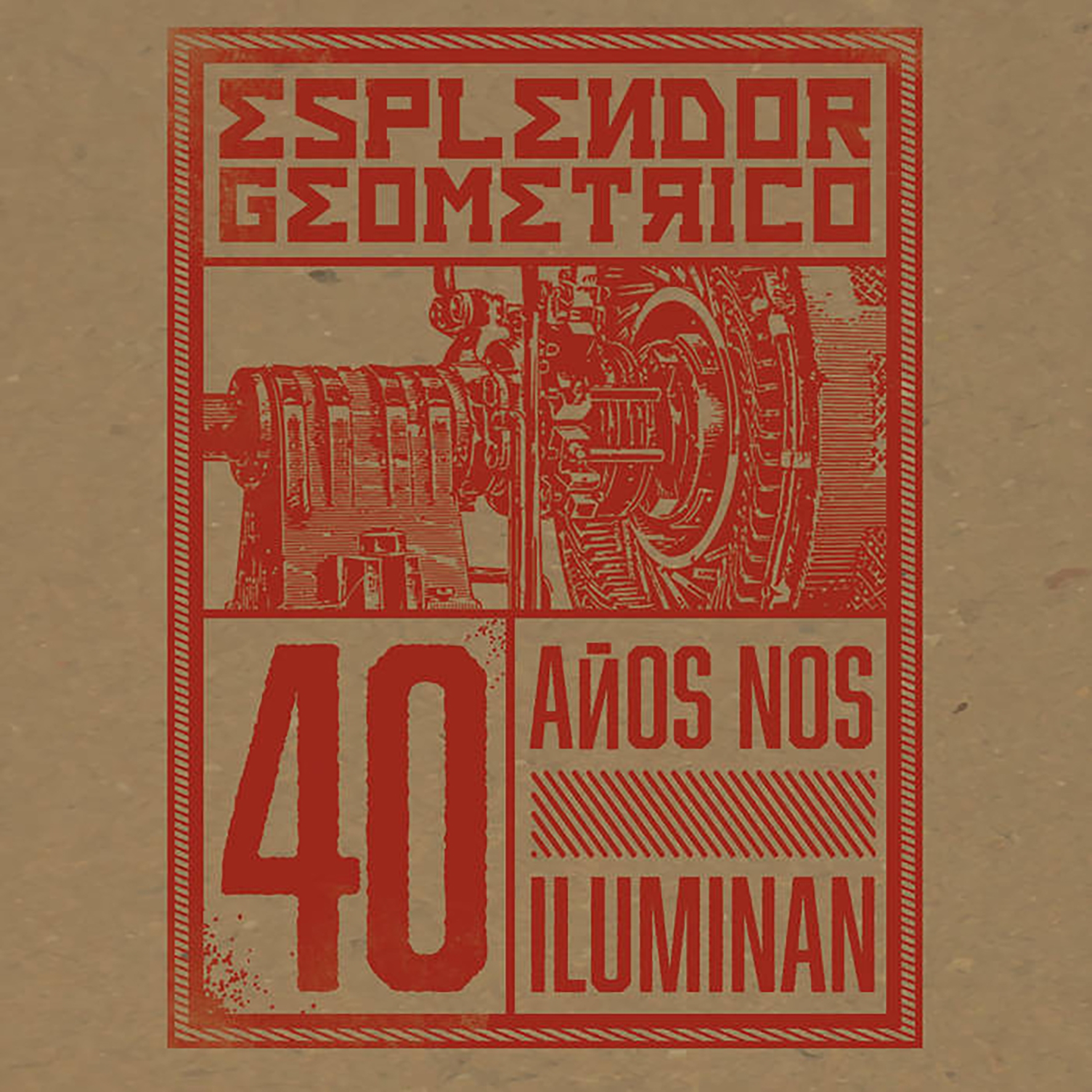 This is definitely one of the more confounding Esplendor Geométrico releases in recent memory, as it is ostensibly a celebration of the project's 40th anniversary (the title translates as "40 years illuminate us"), but is also ostensibly all-new material that somehow feels like at least three different bands. There is a logical explanation for that, as the album features several collaborations, some recent compositions, and a number of noisy, pummeling throwbacks to EG's early years (presumably revisiting that style with the benefit of four decades of illumination). An impressively honest additional explanation can be found in the liner notes, however, as the duo note that neither member makes a living from music, which frees them to "do what they want without even thinking of what their fans and followers expect." As a longtime EG fan, I can confirm that this album was definitely made without any consideration for whether or not I would like it (or whether it even makes complete sense). Then again, anyone who has been releasing great albums for several decades is entitled to celebrate with a go-for-broke, everything-but-the-kitchen-sink epic if they feel like it. It is all perfectly fine by me, but anyone simply searching for a good recent EG album should give this one a wide berth and head towards Cinética instead (also from 2020). That said, there are definitely plenty of bludgeoning percussion assaults here that fans of the project's noisier side will enjoy (as long as they do not mind sifting through an unusually prickly, blunt, eclectic, and overwhelming batch of songs).
This is definitely one of the more confounding Esplendor Geométrico releases in recent memory, as it is ostensibly a celebration of the project's 40th anniversary (the title translates as "40 years illuminate us"), but is also ostensibly all-new material that somehow feels like at least three different bands. There is a logical explanation for that, as the album features several collaborations, some recent compositions, and a number of noisy, pummeling throwbacks to EG's early years (presumably revisiting that style with the benefit of four decades of illumination). An impressively honest additional explanation can be found in the liner notes, however, as the duo note that neither member makes a living from music, which frees them to "do what they want without even thinking of what their fans and followers expect." As a longtime EG fan, I can confirm that this album was definitely made without any consideration for whether or not I would like it (or whether it even makes complete sense). Then again, anyone who has been releasing great albums for several decades is entitled to celebrate with a go-for-broke, everything-but-the-kitchen-sink epic if they feel like it. It is all perfectly fine by me, but anyone simply searching for a good recent EG album should give this one a wide berth and head towards Cinética instead (also from 2020). That said, there are definitely plenty of bludgeoning percussion assaults here that fans of the project's noisier side will enjoy (as long as they do not mind sifting through an unusually prickly, blunt, eclectic, and overwhelming batch of songs).
For better or worse, Arturo Lanz and Saverio Evangelista definitely did not exert themselves coming up with anything beyond just beats and textures for this album. Given EG's considerable prowess in those regards, however, that is hardly a deal-breaker and may even be considered an "all killer, no filler" back-to-basics treat (depending on one's perspective and appreciation for well-executed brutality). In theory, all the best pieces should be on the first disc since the second one is composed of pieces omitted from the vinyl. In reality, however, there are gems scattered fairly liberally across both halves. On the main album, there are a few enjoyable collaborations and a number of EG's standard bulldozing rhythmic juggernauts, but there are some real surprises too. The biggest one is probably the psychotropic sound collage "Buenos Días," which sounds like loops of machine noise jamming with ducks, bullfrogs, and a language tape, but my notes for other songs are filled with phrases like "a herd of cows and a bad metal guitarist just crashed band practice," "Muslimgauze with the intensity dialed up too high," "wrong-speed party anthem," or "a churning, unstoppable industrial groove just rolled through a playground and crashed into an arcade." That last piece ("Vuelve A Jugar") is one of the album’s best, though I also enjoyed "MokBa" quite a bit (massive primitive robots transform a political march into a delightfully lurching dance party). Weirdly, the second disk probably has the better hit-to-miss ratio and the wildest twists. For example, "Avanti" sounds like NWW went completely feral while recording "Rock’n’Roll Station," while "Hungry" resembles a power electronics guy and a black metal band collaborating on an absolutely scorching drone album. Elsewhere, "Trans" evokes a heaving half-gelatinous/half-mechanized horror, while "Tribuna Del Trabajo" sounds like an weirdly sensual and industrial-damaged festival parade shimmying its way through a vintage arcade. Admittedly, trying to listen to the entire album in one sitting makes me feel a bit psychologically mauled, frazzled, and exhausted, but there are quite a few songs here that make their impact deeply felt when experienced by themselves. If anybody ever asked me which album I would absolutely want on my side in a brawl, it would most likely be this one.
Samples can be found here.



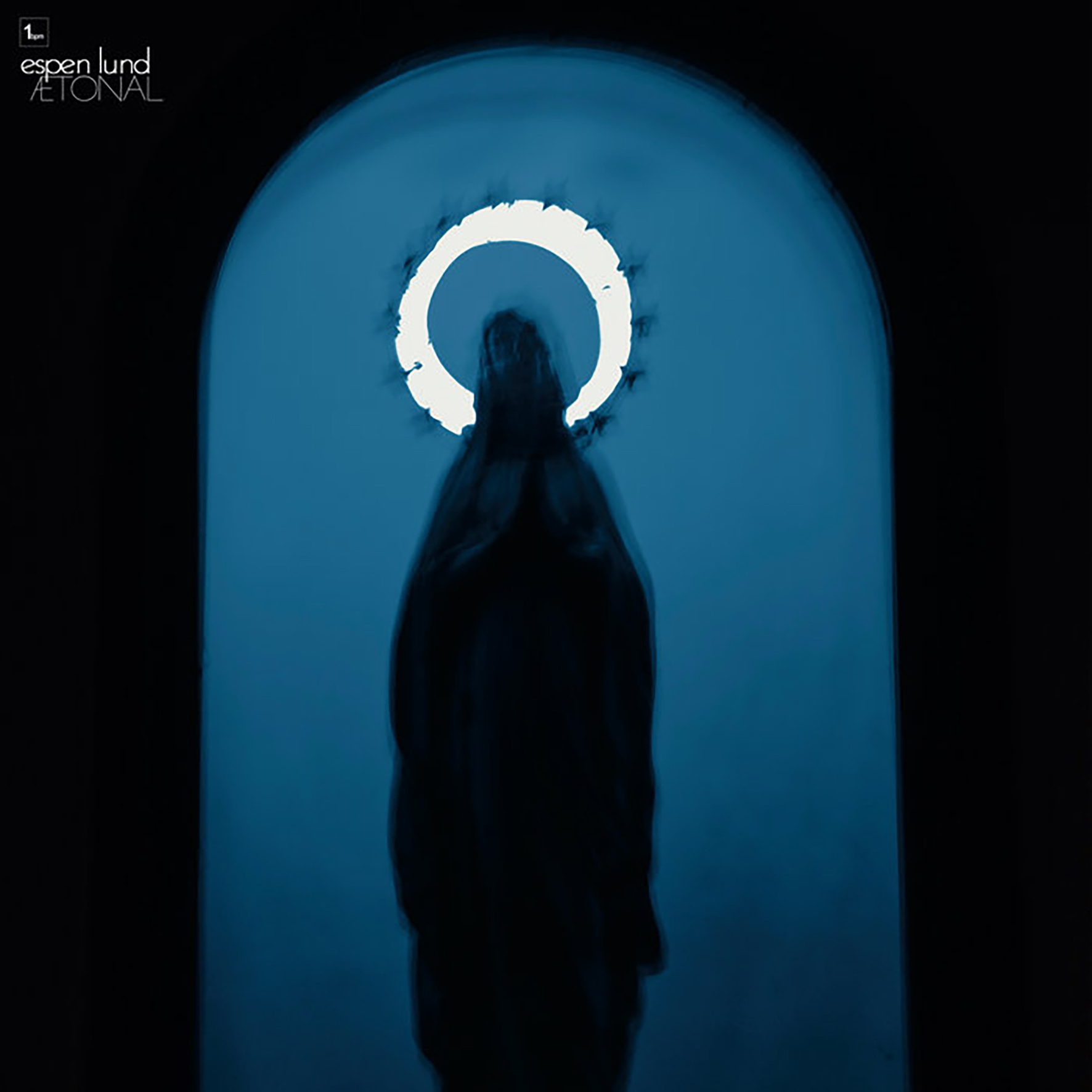
 Die Munch Machine is the side project of Tim Cedar and Jon Hamilton from Part Chimp. While both Part Chimp and Die Munch Machine may perform loud, the similarities extend no further. Die Munch Machine slough off the stoner doom skin in favor of feedback-populated motorik space funk. While not essential listening, this is a fun listen for spaceheads and fans of kosmische rock.
Die Munch Machine is the side project of Tim Cedar and Jon Hamilton from Part Chimp. While both Part Chimp and Die Munch Machine may perform loud, the similarities extend no further. Die Munch Machine slough off the stoner doom skin in favor of feedback-populated motorik space funk. While not essential listening, this is a fun listen for spaceheads and fans of kosmische rock. It has been quite a long time since these shape-shifting drone stalwarts from Kranky's golden age last surfaced with a major release, aside from the gnarled, bass-heavy Disorder LP that teasingly appeared on Important back in 2017. While I am certainly happy to have them back, this latest release from the core duo of Joe Denardo and Kevin Doria takes a somewhat unexpectedly minimalist and meditative direction. I am tempted to call Diptych a "return to form," but Growing have several different appealing forms they could potentially return to and this one arguably feels like a mis-remembered return to the pair's Kranky era, as these radiant slow-motion reveries pieces feel more akin to Stars of the Lid than any Growing album I recall. Whether that is a step in the right direction or not is hard to say, as a strong case could be made that project's killer run of weirder, spacier releases in 2007 & 2008 was its zenith and that this latest opus sands away all of the duo's distinctive quirks and sharp edges. From a purely artistic perspective, however, Diptych is quite an impressive achievement, as Doria and Denardo distill drone to its purest essence with an almost supernatural degree of control and patience.
It has been quite a long time since these shape-shifting drone stalwarts from Kranky's golden age last surfaced with a major release, aside from the gnarled, bass-heavy Disorder LP that teasingly appeared on Important back in 2017. While I am certainly happy to have them back, this latest release from the core duo of Joe Denardo and Kevin Doria takes a somewhat unexpectedly minimalist and meditative direction. I am tempted to call Diptych a "return to form," but Growing have several different appealing forms they could potentially return to and this one arguably feels like a mis-remembered return to the pair's Kranky era, as these radiant slow-motion reveries pieces feel more akin to Stars of the Lid than any Growing album I recall. Whether that is a step in the right direction or not is hard to say, as a strong case could be made that project's killer run of weirder, spacier releases in 2007 & 2008 was its zenith and that this latest opus sands away all of the duo's distinctive quirks and sharp edges. From a purely artistic perspective, however, Diptych is quite an impressive achievement, as Doria and Denardo distill drone to its purest essence with an almost supernatural degree of control and patience.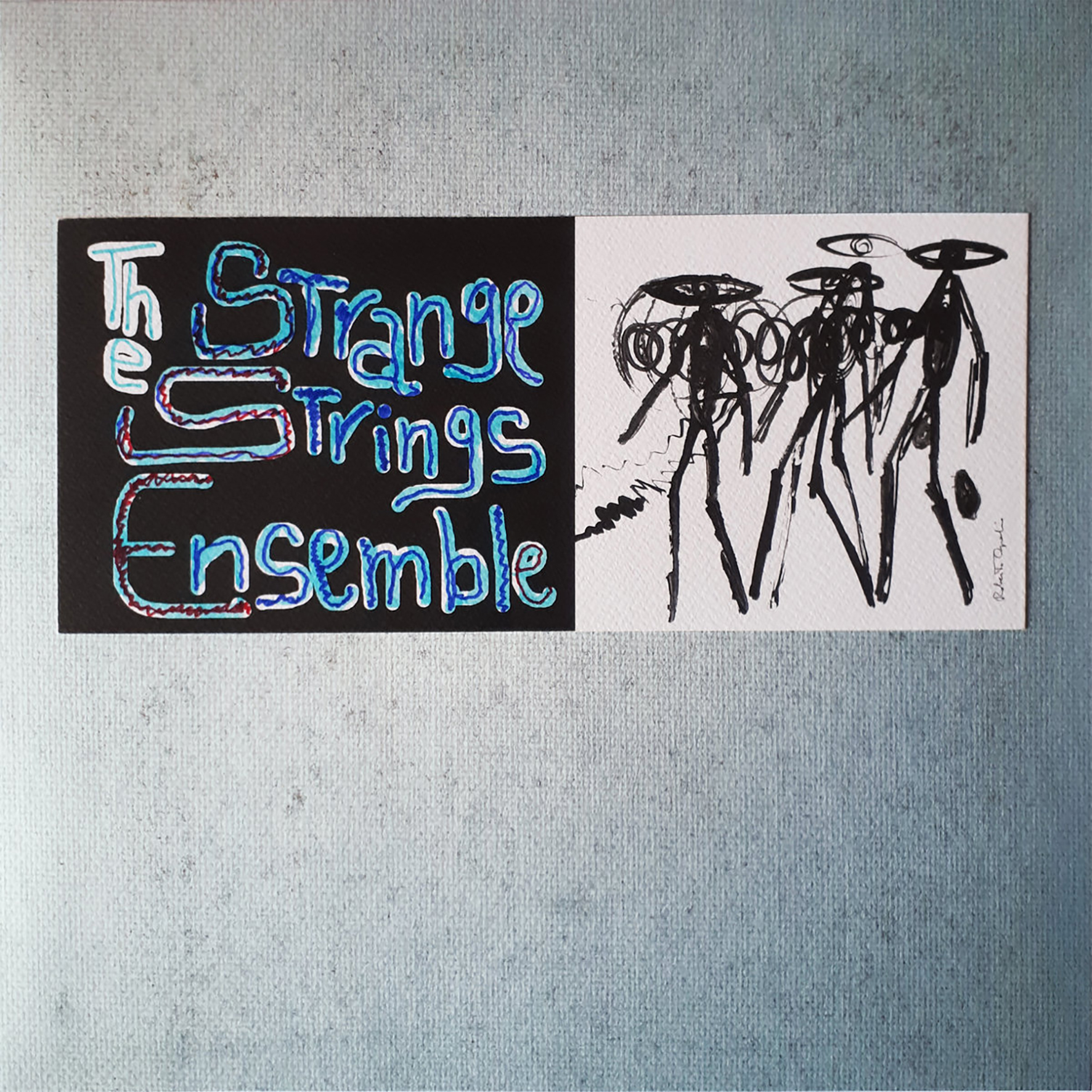 It fair to say that any album involving the Opalio brothers is destined to be memorably bizarre, but this Sun Ra-inspired EP takes My Cat is an Alien's vision even further out into fringes of outsider psychedelia than usual. For one, it is almost entirely acoustic, so there are no alientronics or psychotropic drones to be found and Roberto's queasily floating vocals seem (mostly) absent as well. Obviously, that eliminates nearly everything "familiar" about MCIAA's vision, so it makes a lot of sense to give this project a fresh name. In lieu of the expected alien terrain, the ensemble (rounded out by writer Philippe Robert & Joëlle Vinciarelli) "spontaneously composed" a visceral, churning, and jagged eruption using the "ancient, mostly ethnic, acoustic string instruments from Vinciarelli's vast collection." In keeping with the Sun Ra theme, the instruments were purposely untuned in homage to the late jazz icon's 1967 Strange Strings album, which Ra dubbed "a study in ignorance" (the Arkestra were given an eclectic array of oft-foreign string instruments that they did not know how to play). Unsurprisingly, critic Sean Westergaard's assessment of that polarizing Sun Ra opus is even more true of its spiritual heir: "If you don't like 'out,' stay clear of this one." I, however, am quite fond of "out," so I very much enjoyed this brief, singular, and synapse-frying detour.
It fair to say that any album involving the Opalio brothers is destined to be memorably bizarre, but this Sun Ra-inspired EP takes My Cat is an Alien's vision even further out into fringes of outsider psychedelia than usual. For one, it is almost entirely acoustic, so there are no alientronics or psychotropic drones to be found and Roberto's queasily floating vocals seem (mostly) absent as well. Obviously, that eliminates nearly everything "familiar" about MCIAA's vision, so it makes a lot of sense to give this project a fresh name. In lieu of the expected alien terrain, the ensemble (rounded out by writer Philippe Robert & Joëlle Vinciarelli) "spontaneously composed" a visceral, churning, and jagged eruption using the "ancient, mostly ethnic, acoustic string instruments from Vinciarelli's vast collection." In keeping with the Sun Ra theme, the instruments were purposely untuned in homage to the late jazz icon's 1967 Strange Strings album, which Ra dubbed "a study in ignorance" (the Arkestra were given an eclectic array of oft-foreign string instruments that they did not know how to play). Unsurprisingly, critic Sean Westergaard's assessment of that polarizing Sun Ra opus is even more true of its spiritual heir: "If you don't like 'out,' stay clear of this one." I, however, am quite fond of "out," so I very much enjoyed this brief, singular, and synapse-frying detour.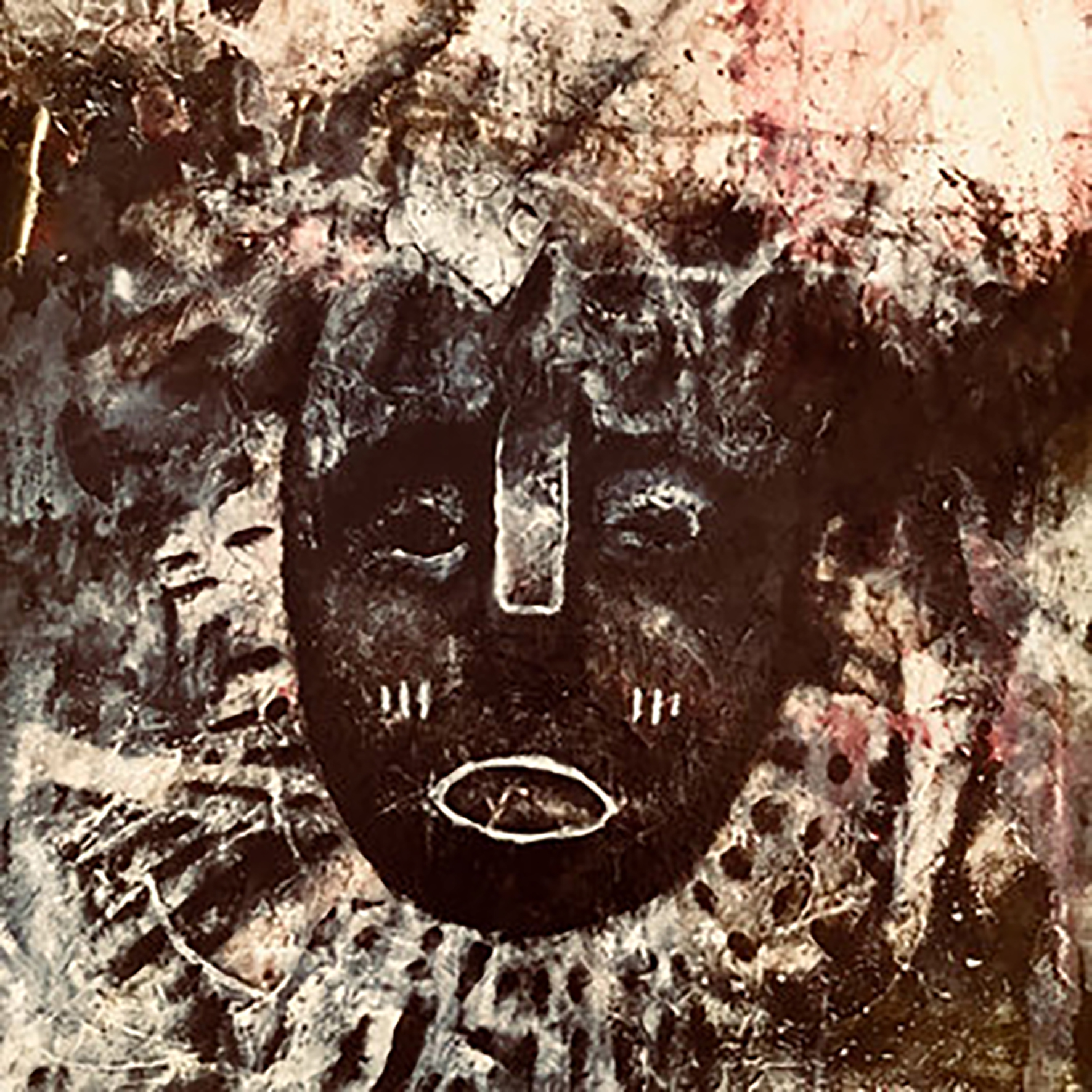
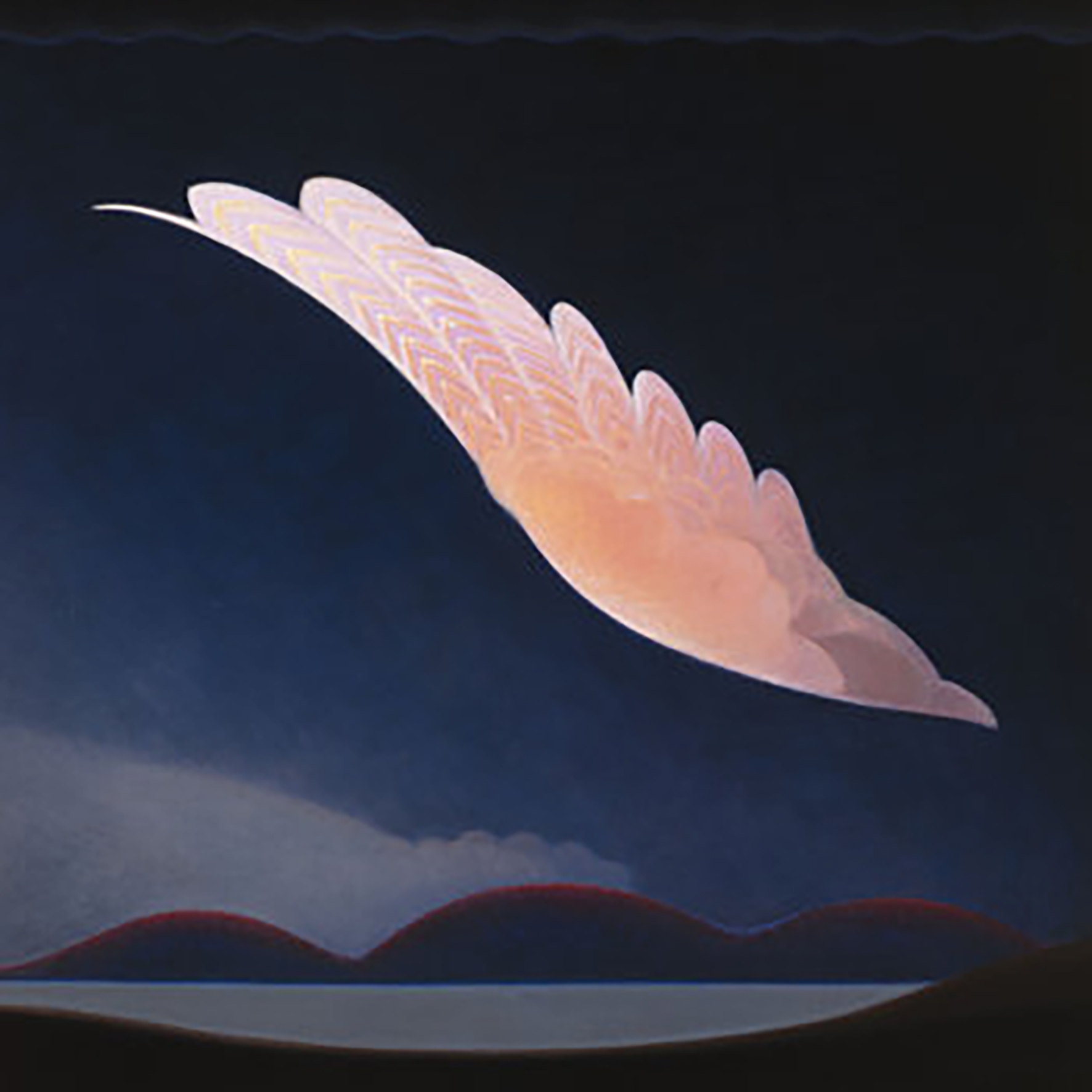
 Part of Ulrich Schnauss's musical history is building layers of beautiful electronic imagery, both within his solo work and partnering with others. Schnauss is paired up once again with Danish recording and mastering engineer Jonas Munk, member of space rockers Causa Sui and half of the ambient chill-out duo Billow Observatory. These two equally talented creators produce a lush mélange of extraordinarily hypnotic dreamscapes on Eight Fragments Of An Illusion. Rich kosmische textures, vibrant guitar, and concentrated layers of electronic atmosphere make for an engaging ride, especially when experienced on headphones.
Part of Ulrich Schnauss's musical history is building layers of beautiful electronic imagery, both within his solo work and partnering with others. Schnauss is paired up once again with Danish recording and mastering engineer Jonas Munk, member of space rockers Causa Sui and half of the ambient chill-out duo Billow Observatory. These two equally talented creators produce a lush mélange of extraordinarily hypnotic dreamscapes on Eight Fragments Of An Illusion. Rich kosmische textures, vibrant guitar, and concentrated layers of electronic atmosphere make for an engaging ride, especially when experienced on headphones.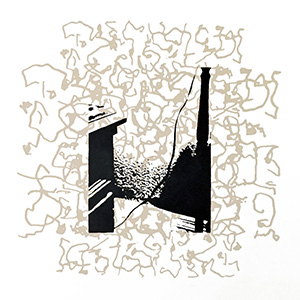 Founded as a band in Omaha, Nebraska in 1998, Naturaliste's first release in over 15 years is certainly a drastic departure from the local, improvised shows the group was responsible for. Rather than those frequent, though often dubiously captured recordings, Temporary Presence is not only a highly quality document of fully realized artistry, but also a document of where the band is so many years later.
Founded as a band in Omaha, Nebraska in 1998, Naturaliste's first release in over 15 years is certainly a drastic departure from the local, improvised shows the group was responsible for. Rather than those frequent, though often dubiously captured recordings, Temporary Presence is not only a highly quality document of fully realized artistry, but also a document of where the band is so many years later.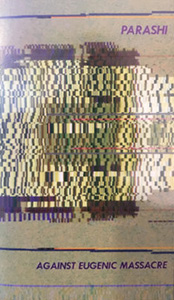 Mike Griffin, as Parashi, is one of the most prolific noise artists in the upstate New York region, both on his own and in collaborations with others, such as John Olson (as Spykes) and Noise Nomads. Against Eugenic Massacre features him doing what he does best: a murky combination of psychedelic electronics, incidental rhythms, and mysterious ambiences that perfectly balances between harsh experimentation and complex environments.
Mike Griffin, as Parashi, is one of the most prolific noise artists in the upstate New York region, both on his own and in collaborations with others, such as John Olson (as Spykes) and Noise Nomads. Against Eugenic Massacre features him doing what he does best: a murky combination of psychedelic electronics, incidental rhythms, and mysterious ambiences that perfectly balances between harsh experimentation and complex environments.
